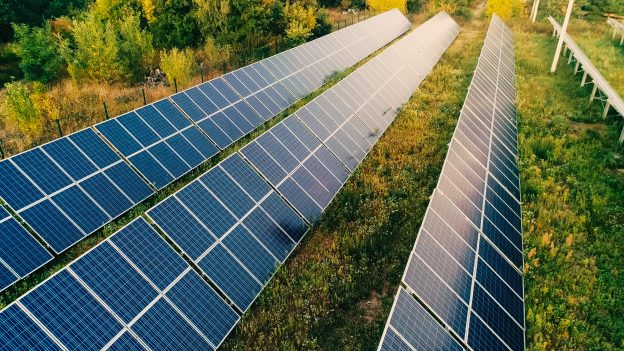Polysilicon:
Polysilicon prices have gone down further throughout the week. The mainstream concluded price for mono recharge polysilicon is RMB 40/KG, while mono dense polysilicon is priced at RMB 38/KG and N-type polysilicon is currently priced at RMB 43/KG.
Given the transaction dynamics, polysilicon prices have plummeted to an unreasonable level, yet the downstream sector remains pessimistic about future price trends. Compounding the issue, polysilicon inventory remains high, impeding the normalization of trading activities in the sector. In response, ingot manufacturers are resorting to purchasing polysilicon through strategies involving more orders with lower quantities or acquiring doping polysilicon.
On the supply side, this month's polysilicon production has been impacted by various factors including maintenance, production reductions, and delays in new capacity coming online. Consequently, polysilicon production for this month has slightly decreased to around 190,000 tons, exacerbating the oversupply situation. Looking ahead, the introduction of new capacity by leading manufacturers will further intensify polysilicon inventory pressures.
Regarding demand, intensifying competition leading to declining wafer prices will continue, weakening the bargaining power of downstream wafer manufacturers grappling with high losses and inventory levels. Consequently, they can only seek increased profits from polysilicon manufacturers also struggling with high inventory pressures. As a result, it is probable that polysilicon prices will continue to decline.
This week, the average price of monocrystalline dense polysilicon has dipped below CNY 40/kg, while N-type polysilicon has fallen to CNY 43/kg. From a cost perspective, it's evident that polysilicon prices have already reached an unreasonable level. However, with the supply significantly exceeding demand, polysilicon manufacturers are left with no choice but to engage in fierce competition to generate cash flow. Therefore, polysilicon prices are likely to fluctuate in the future, potentially leading to N-type polysilicon prices falling below CNY 40/kg by month's end.
Wafer:
The prices of wafer have gone down throughout the week. The mainstream concluded price for M10 P-type wafer is RMB 1.55/Pc, while G12 P-type wafer is priced at RMB 2.10/Pc. The mainstream concluded price for M10 N-type wafer is RMB 1.40/Pc and G12 N-type is RMB 2.10/Pc. The mainstream concluded price for N-type G12R wafers is RMB 1.85/Pc.
Starting this week, we will also be tracking prices for N-type 210R wafers. This month, wafer production is estimated to range between 7.6 billion and 7.8 billion pieces. Despite the prevailing losses experienced by most wafer manufacturers, they are maintaining their production rates to safeguard their market share. Consequently, planned wafer production remains high.
At the outset of the month, wafer inventory stood at approximately 4 billion pieces. Given the sales and production projections for this month, it is anticipated that inventory pressures will persist until month-end.
This week, the price of P-type M10 wafers has fallen to CNY 1.55 per piece, while N-type M10 wafers are now priced at CNY 1.40 per piece. There's a possibility of further price reductions in the future. Nevertheless, wafer manufacturers are expected to adjust their pricing strategies to expedite the transition for their suppliers.
Cell:
Cell prices have declined this week. The mainstream concluded price for M10 cell is RMB 0.330/W, while G12 cell is priced at RMB 0.350/W. The price of M10 mono TOPCon cell is RMB 0.38/W, while that of G12 mono TOPCon cell is RMB 0.40/W.
This month, planned production in the cell sector has increased compared to last month, although the rate of increase has slowed down. The gap between supply and demand has widened to approximately 8GW to 10GW, inevitably leading to a further increase in cell inventory. Consequently, cell supply is gradually tipping into surplus territory, with cell inventory expected to exceed 15GW by month-end.
Furthermore, module manufacturers are grappling with the repercussions of changes in U.S. tariffs, resulting in a slight decline in planned production at Southeastern plants. In summary, the cell sector faces the looming risk of supply-demand imbalance. Maintaining stable cell prices this month proves challenging, and the sector is under increased pressure.
On one hand, dual distribution is denting the profits of cell manufacturers, while OEM deals are eroding manufacturers' pricing power. This week, cell prices have declined, with N-type M10 cell prices dipping below CNY 0.40/W. These developments signal heightened competition and the possibility of a survival-of-the-fittest scenario in the cell sector, with prices potentially dropping below the cash cost for cell manufacturers by month's end.
Module:
Module prices have remained stable throughout the week. The mainstream concluded price for 182mm facial mono PERC module is RMB 0.86/W, 210mm facial mono PERC module is priced at RMB 0.88/W, 182mm bifacial glass PERC module at RMB 0.88/W, and 210mm bifacial glass PERC module at RMB 0.90/W. The mainstream concluded price for 182mm bifacial TOPCon modules is RMB 0.94/W, and 210mm bifacial HJT modules at RMB 1.13/W.
This month, the planned module production is expected to range between 57GW to 59GW, indicating a sluggish growth rate. Recent shifts in U.S. tariff policies have started to impact planned production among Southeast Asian manufacturers. Additionally, adjustments to tariffs in the Indian market pose a risk of reduced module import volumes.
Despite this, module prices have remained stable this week. However, customers are increasingly eager to negotiate lower prices, driven by continual declines in upstream sector prices. Moreover, module manufacturers are actively working to clear their inventory, further influencing sales prices.







